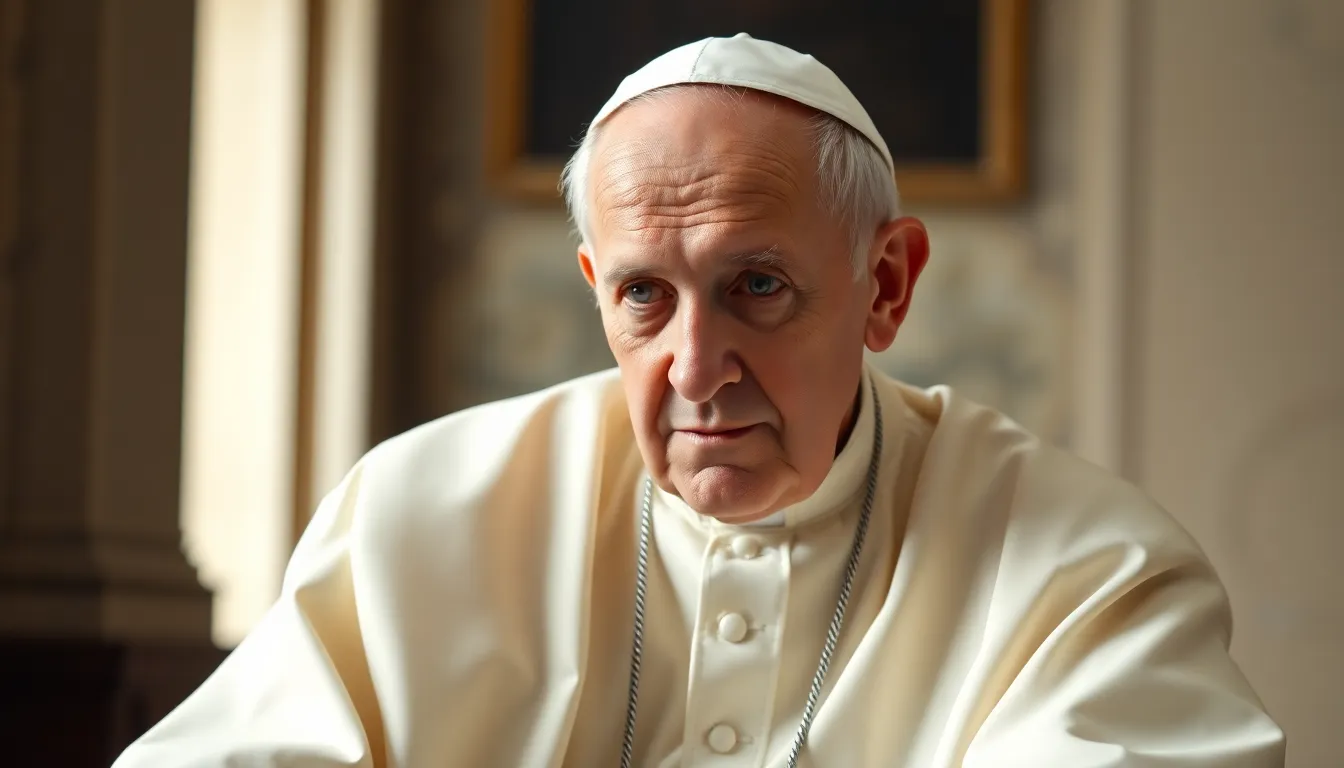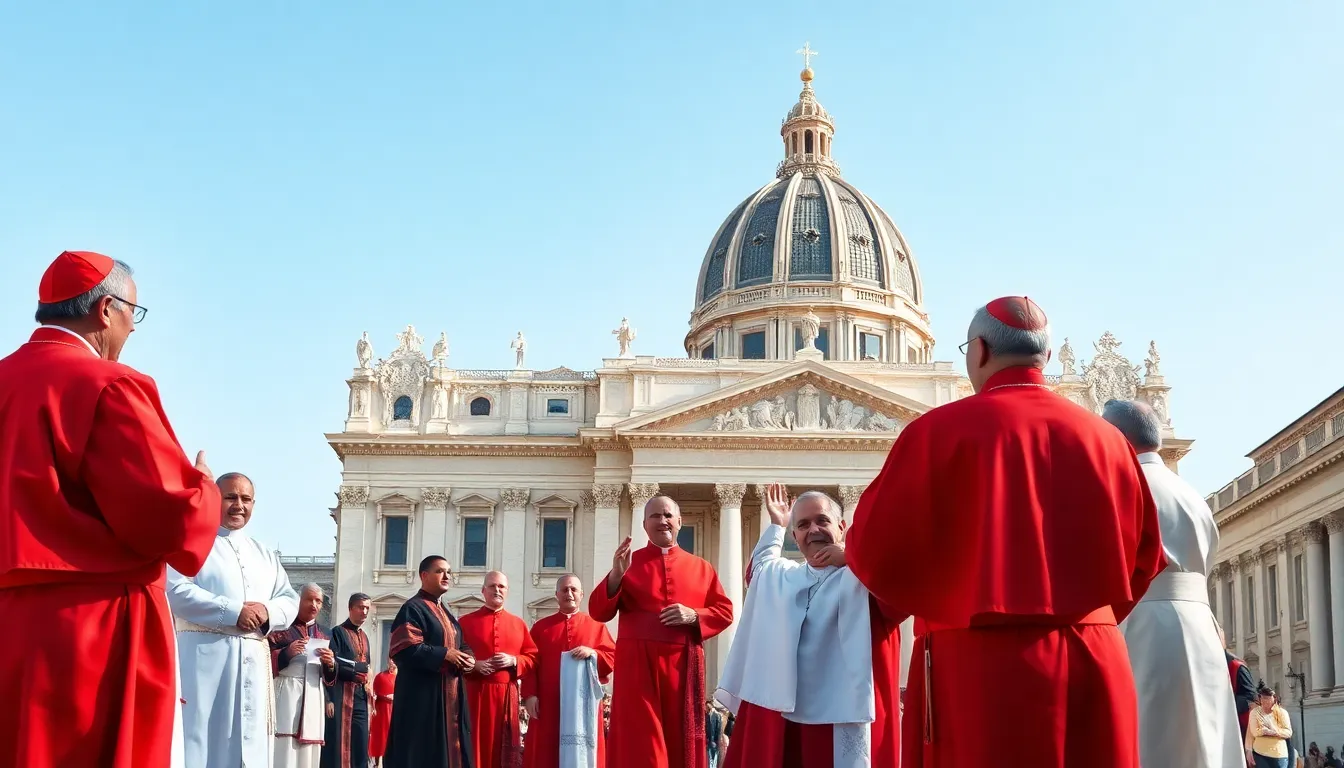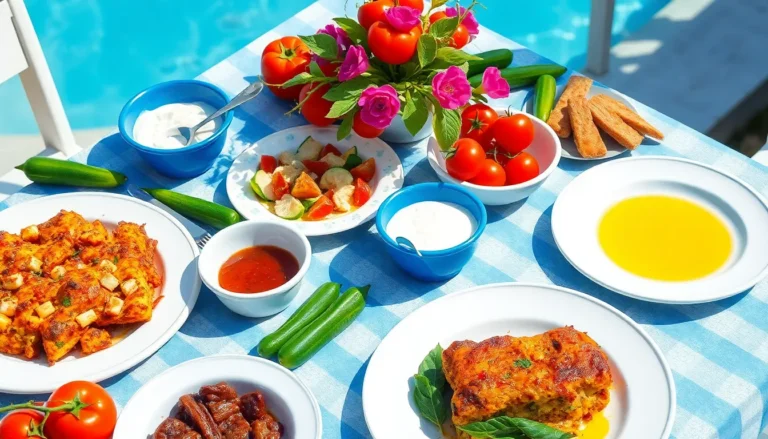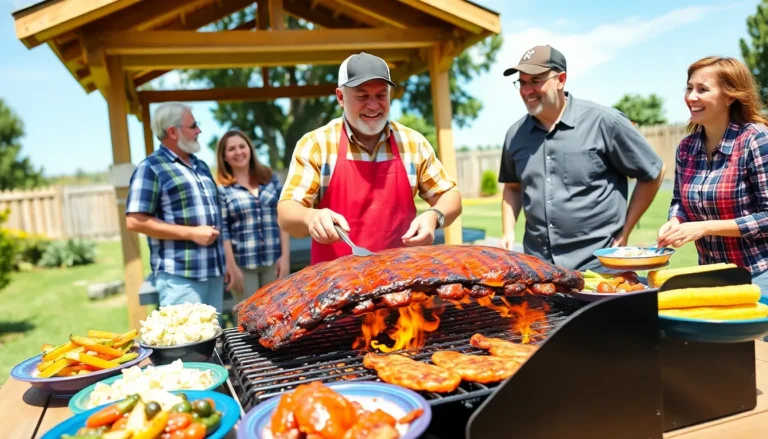Table of Contents
ToggleThe Vatican’s been buzzing with speculation, and everyone’s wondering: when will the next pope take the throne? With a mix of tradition and modernity, the papal transition is like a high-stakes game of religious musical chairs. One moment the world’s focused on the current pontiff, and the next, it’s all about who’ll don the white cassock next.
Overview of Papal Succession
Papal succession involves a structured process defined by centuries of tradition. This process determines how the Catholic Church transitions leadership from one pope to another.
The Role of the Pope
The pope serves as the spiritual leader of over 1.3 billion Catholics globally. Maintaining doctrinal integrity and providing guidance are key responsibilities. Additionally, the pope represents the Church in diplomatic matters. In times of crisis, the pope often offers comfort and reassurance to the faithful. His role includes presiding over major liturgical events and appointing bishops.
Historical Context of Papal Elections
Papal elections date back to early Christianity. Initially, bishops of Rome were chosen through acclamation by the community. By the 11th century, the election process formalized, giving power to the College of Cardinals. Modern practices evolved further during the Second Vatican Council, emphasizing the need for careful deliberation. Recent elections have reflected shifts in Church priorities, adapting to modern challenges and expectations.
Current Papal Situation

The current papal situation reflects a mix of concern and speculation about the future leadership of the Catholic Church. Attention now focuses on Pope Francis, who is at the center of discussions regarding his health and age.
Health and Age of Pope Francis
Health remains a primary concern regarding Pope Francis. At 86, his age influences perceptions about his ability to serve continuously. Recent reports indicate that he has faced health challenges, including a respiratory infection that required hospitalization. Such health issues bring attention to potential successors, as discussions about succession intensify amid concerns for continuity in Church leadership.
Recent Developments and Statements
Recent developments further fuel speculation about the papal future. Statements from the Vatican highlight Pope Francis’s commitment to his papacy while acknowledging the importance of succession planning. During an address, he hinted at the necessity for the Church to prepare for potential transitions, emphasizing the need for strong leadership. These remarks underscore the ongoing dialogue about the timing and implications of the next papal election.
Speculations on Papal Transition
Speculation about the next papal transition continues to grow within the Catholic community. Factors impacting this discourse include the current pope’s age and health challenges.
Factors Indicating a New Pope
Pope Francis, at 86 years old, faces increasing scrutiny regarding his leadership longevity. Health issues, including a recent hospitalization for a respiratory infection, raise questions about his ability to serve. Media reports suggest that these circumstances compel the Vatican to contemplate the future. The Congregation for Bishops, alongside the College of Cardinals, actively discusses succession strategies. Additionally, the rise of potential candidates is a significant part of these discussions.
Potential Candidates for the Papacy
Various figures emerge as potential successors to Pope Francis. Cardinal Pietro Parolin, the current Secretary of State, garners attention for his diplomatic experience. Cardinal Luis Antonio Tagle, known for his pastoral approach, also stands out. Cardinal Robert McElroy’s progressiveness attracts interest among reform-minded factions. Each candidate brings distinct leadership qualities that could shape the Church’s future direction. Speculative discussions about these figures reflect varying viewpoints within the Church.
The Papal Election Process
The papal election process is a carefully structured series of events that traditionally follows the death or resignation of a pope. This process ensures a smooth transition in leadership within the Catholic Church.
Conclave Procedures
The conclave is composed of cardinals under the age of 80, who come together in Vatican City for the election. During this time, cardinals are sequestered to maintain confidentiality and minimize outside influence. Meetings occur in the Sistine Chapel, where they discuss potential candidates and pray for guidance. Following deliberations, cardinals cast ballots to select the new pope. The conclave concludes only when a candidate receives a two-thirds majority.
Voting Mechanisms
The voting mechanism involves a two-step process: initial ballots and subsequent rounds if no candidate secures enough votes. Each cardinal writes their choice on a paper ballot. Afterward, the ballots are tallied publicly, with the results announced to all participants. If necessary, subsequent votes occur until a new pope emerges. Once a pope is elected, the announcement occurs from the balcony of St. Peter’s Basilica, signaling the conclusion of the conclave.
The future of the papacy remains a topic of significant interest and speculation. As Pope Francis navigates his role amidst health concerns and advancing age the conversation about his potential successors grows more urgent. The Catholic Church’s structured approach to papal succession ensures that when the time comes for a new leader the transition will be both respectful of tradition and responsive to contemporary challenges.
With various candidates emerging each offering unique perspectives the Church stands at a crossroads that could shape its direction for years to come. The anticipation surrounding the next conclave reflects the deep commitment of the Catholic community to its spiritual leadership and the evolving landscape of faith in the modern world.







